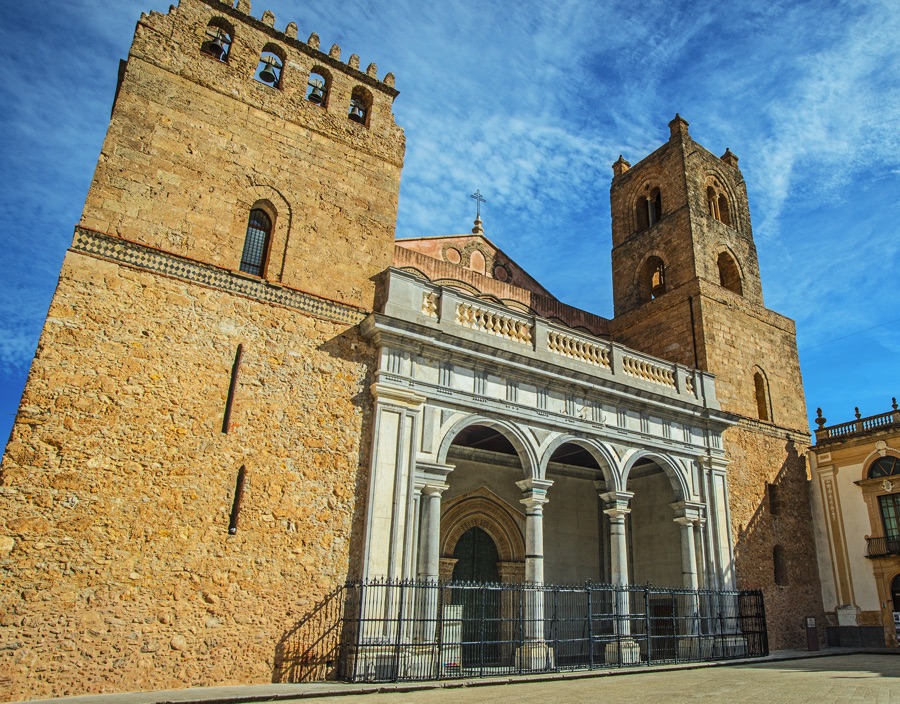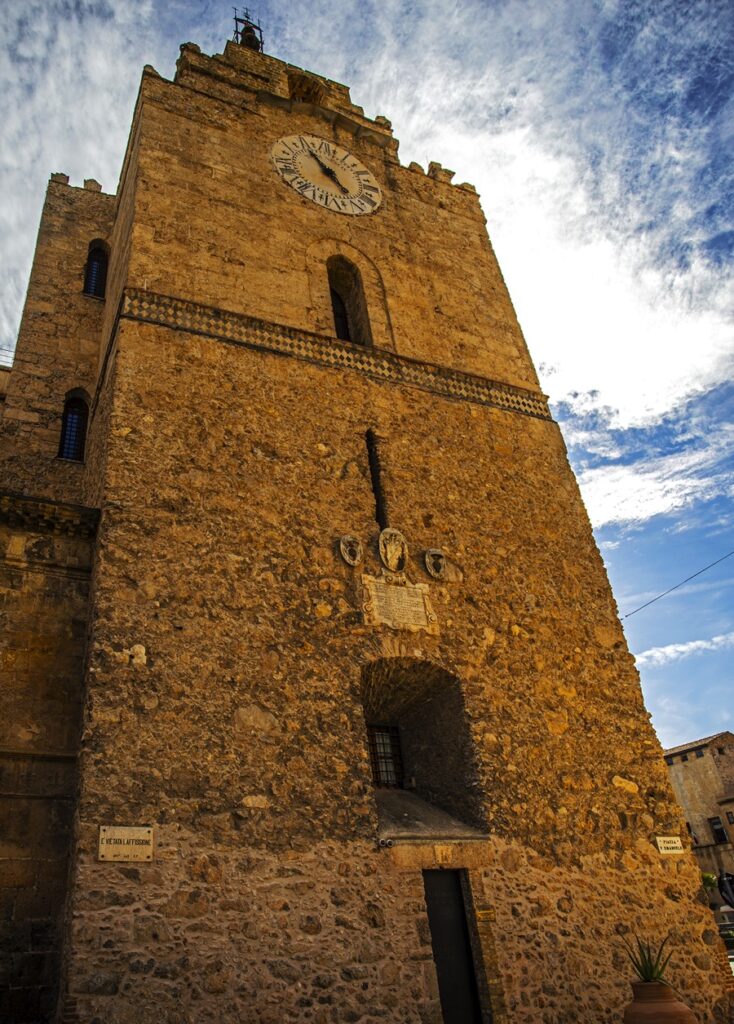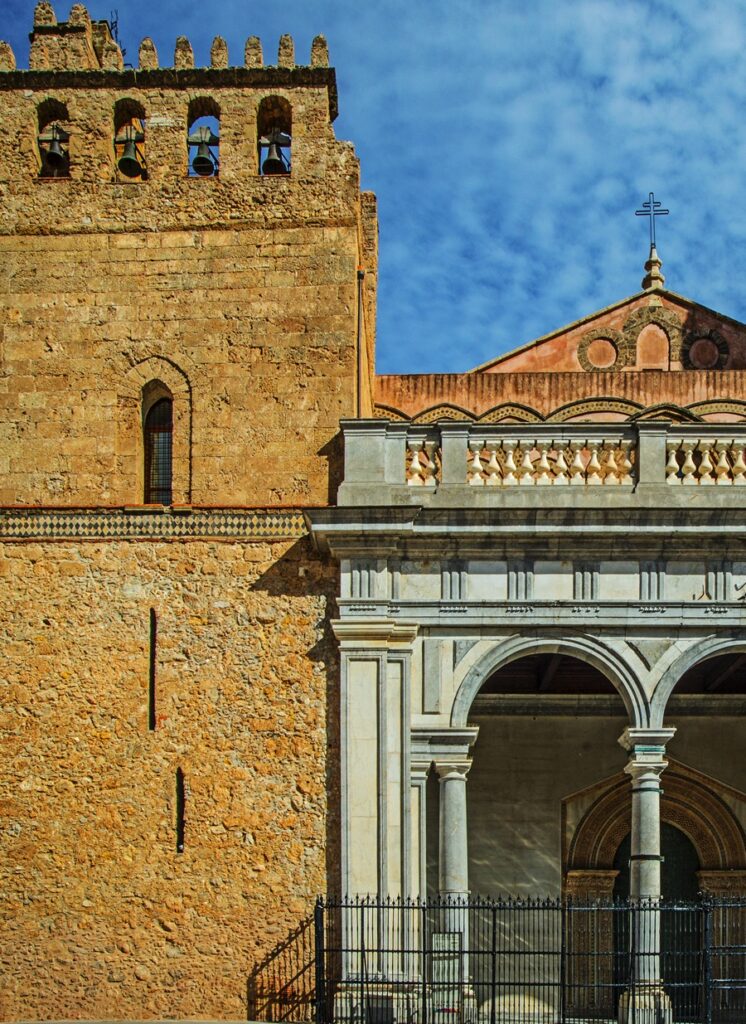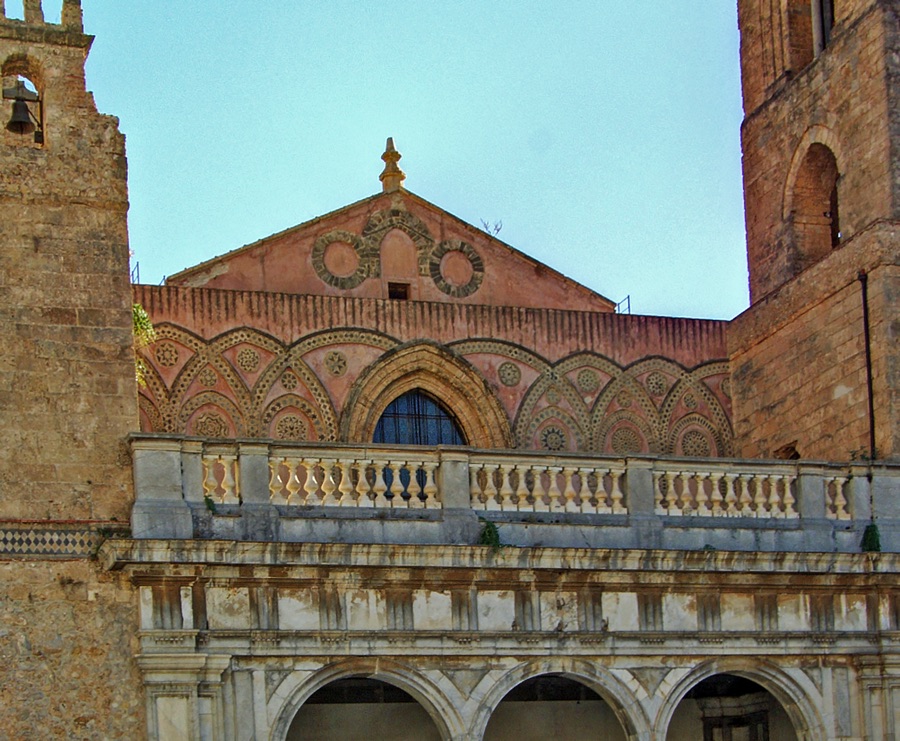The position of the towers on each side of the main façade of the Monreale Cathedral corresponds, in terms of width and depth, with the measurements of a portico, built at the same time as the church. Due to a collapse, it was replaced by the one we see today, which dates back to 1770.
The imposing appearance of the two buildings already differs from the lower order, which is higher than the one above and originally had no windows.
Moreover, while the latter is made of
rusticated work
, the upper one, in both towers, is visibly lower and is made of rows of
square ashlars
, highlighting a recessed structure framed, at the base, by a wide band decorated with inlaid rhombuses. Behind it, there is a
pointed window
, set in a
string course frame
which is also present on the other tower, like a mirror image.
Our eyes are drawn to the tallest tower, the one that faces south, distinguishable from its twin by the presence of two further orders that become more narrow in width.  Each façade is lightened by the presence of a
single lancet window
Each façade is lightened by the presence of a
single lancet window
in the first order, overlaid by a
double lancet window
in the upper order, enclosed by a triple lintel.
A stone spire, struck by lightning and destroyed in 1807, crowned the end of the southern tower. The northern tower appears less slender and lacks lightness in the elevations. Its walls, which house the bells, were added in the 16th century.At the time, the two structures had staircases located within the square-based building structure adjacent to the eastern façade. Using them to reach the upper floors, access was gained through narrow doors, which have now been bricked up, at the sides of the nave and the roofs of the side aisles. Turning our attention away from the massive structure of the two
residual towers
The northern tower appears less slender and lacks lightness in the elevations. Its walls, which house the bells, were added in the 16th century.At the time, the two structures had staircases located within the square-based building structure adjacent to the eastern façade. Using them to reach the upper floors, access was gained through narrow doors, which have now been bricked up, at the sides of the nave and the roofs of the side aisles. Turning our attention away from the massive structure of the two
residual towers
which, from the end of the 12th century, formed part of the high walls protecting the important buildings, we cannot help but notice the
ogival arch decorations
on the upper part of the façade above the portico, rebuilt in the 18th century.
 These ornaments, similar in their attention to detail to those found in the
apses
These ornaments, similar in their attention to detail to those found in the
apses
were interwoven with the wealth of embroidery, starting from the inner sides of the towers’ second order and extending up to and including the two
round arches
and the large pointed window in the centre.
The tympanum is more restrained and recent restoration work has brought to light a walled-up pointed window, adorned by a ring of square ashlars inserted between two round, blind windows, which feature the same ornamentation. The construction of the cathedrals was based on a medieval concept, reflected in the similar compositional richness of the exterior of the apses. It was also based on an overall design, with the altar room to the east and the main entrance, which reached a great height, to the west.